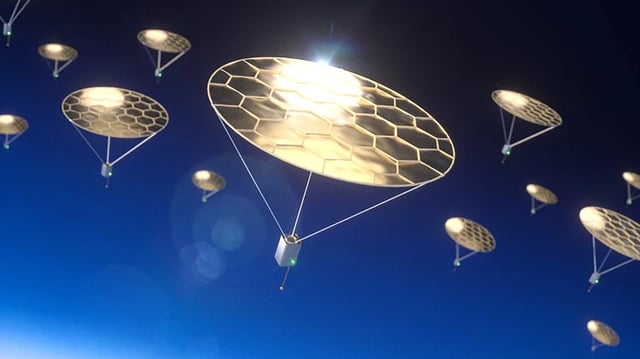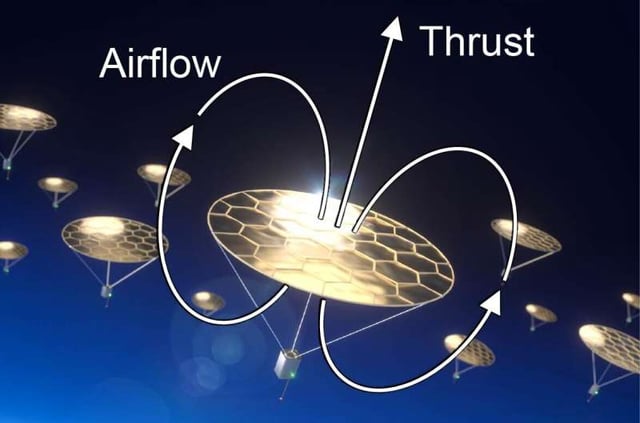Overview
- Researchers reported in Nature that ultralight, two‑layer perforated alumina disks levitated in a vacuum chamber at mesosphere‑like pressures with illumination as low as roughly 55% of sunlight.
- The design uses 100‑nanometer membranes linked by ligaments with a chromium‑coated lower layer to drive photophoresis and thermal transpiration that generate upward thrust.
- Modeling indicates a flyer about 3 cm in radius could carry roughly a 10 mg payload around 75 km altitude, with optimized daylight designs potentially supporting up to ~100 mg.
- Calculations suggest daytime flight is sustainable and that, in polar summers, Earth’s infrared emission could keep flyers aloft after sunset in some conditions.
- The team spun out Rarefied Technologies, which aims for payload‑free atmospheric tests as early as 2026, while projecting several years to integrate sensors and radios and to scale manufacturing for payload‑capable devices.

